 1995 Mitsubishi Lancer VI Dimensions, Size & Specs
1995 Mitsubishi Lancer VI Dimensions, Size & SpecsMeasurements of the 1995 Mitsubishi Lancer VI, engineered for optimal performance and comfort
| Dimensions | |
|---|---|
| Length: | 4250-4295 mm167.3-169.1 in13.9-14.1 ft |
| Width: | 1690 mm66.5 in5.5 ft |
| Height: | 1395-1405 mm54.9-55.3 in4.6-4.6 ft |
| Trunk Capacity: | 420 liter14.8 cu ft |
| Weight Specifications | |
| Curb Weight: | 995-1260 kg2194-2778 lbs |
| Maximal permitted Weight: | 1485-1535 kg3274-3384 lbs |
| Tire Specifications | |
| Rims Size: |
|
| Tire Sizes: |
|
The Mitsubishi Lancer VI, produced from 1995 to 2000, is a compact sedan that blends practical dimensions with lightweight design. Measuring between 4250 mm and 4295 mm (167.3 - 169.1 inches) in length, 1690 mm (66.5 inches) in width, and 1395 to 1405 mm (54.9 - 55.3 inches) in height, this generation of Lancer offers a balanced size ideal for urban and suburban driving. Depending on the specific variant, the curb weight ranges from approximately 995 kg to 1260 kg (2194 - 2778 lbs), supporting a maximum weight between 1485 kg and 1535 kg (3275 - 3385 lbs). These weight figures emphasize the vehicle’s lightweight nature, contributing to its fuel efficiency and handling performance.
The Lancer VI also features a reasonably spacious luggage capacity of 420 liters (14.8 cubic feet), making it suitable for daily commuting and light travel needs. The vehicle rides on 13-inch rims, with tire sizes varying between 175/70 R13, 185/70 R13, and 195/55 R15, balancing comfort and road grip. Overall, the Mitsubishi Lancer VI stands as a well-proportioned sedan offering versatility and reliable performance within its class during its production period.
Discover the standout features that make the 1995 Mitsubishi Lancer VI a leader in its class
Have a question? Please check our knowledgebase first.
The Mitsubishi Lancer VI, produced from 1995 to 2000, has an overall length ranging from 4250 mm to 4295 mm (167.3 inches to 169.1 inches). This slight variation depends on the specific model variant and optional equipment. The length places it comfortably within the compact sedan category, making it practical for urban and suburban use while still offering adequate interior space for passengers and luggage.
The width of the Mitsubishi Lancer VI is 1690 mm (66.5 inches). This width allows for reasonable shoulder room for passengers inside the cabin, especially for a compact sedan. While it may not be as roomy as midsize sedans, it offers a good balance between maneuverability in tight city streets and passenger comfort.
The height of the Mitsubishi Lancer VI varies between 1395 mm and 1405 mm (54.9 inches to 55.3 inches). This variation often results from different suspension settings or optional equipment that may affect ride height. The relatively low height gives the car a sporty stance and improves aerodynamics, while still providing adequate headroom for most passengers.
The curb weight of the Mitsubishi Lancer VI ranges from 995 kg to 1260 kg (2193 lbs to 2778 lbs). This relatively lightweight structure aids in handling agility, fuel efficiency, and performance. The variation in weight depends on factors such as engine choice, transmission, trim level, and added features. The lighter versions tend to have better fuel economy and livelier performance.
The maximum weight, or gross vehicle weight rating (GVWR), of the Mitsubishi Lancer VI ranges from 1485 kg to 1535 kg (3275 lbs to 3384 lbs). This figure includes the vehicle’s curb weight plus occupants, cargo, and any additional equipment. It is essential for safety and legal compliance, ensuring the car operates within safe load limits to avoid excessive wear or compromised handling.
The Mitsubishi Lancer VI features a luggage capacity of 420 liters (approximately 14.8 cubic feet). This trunk space is quite practical for everyday use, including grocery shopping, small luggage for trips, or sports equipment. It fits well within the expectations of compact sedans in its class, providing a good balance between passenger comfort and cargo space.
The Mitsubishi Lancer VI typically comes equipped with 13-inch rims, paired with tire sizes that vary according to the version. Common tire sizes include 175/70 R13, 185/70 R13, and 195/55 R15. These tire choices balance ride comfort, handling, and fuel efficiency, with the option of slightly wider or lower-profile tires on sportier models.
Yes, the Mitsubishi Lancer VI fits comfortably into a standard garage space. With an overall length between 4250 mm and 4295 mm (167.3-169.1 inches) and a width of 1690 mm (66.5 inches), it is compact enough for most single-car garages. The modest height (1395-1405 mm) also ensures ample vertical clearance. Owners can expect easy parking and minimal spatial constraints in typical residential garages.
Compared to the previous Mitsubishi Lancer V generation, the Lancer VI shows modest dimensional and weight changes that reflect a natural evolution in design and engineering. The Lancer VI generally is slightly longer and has a similar width, with improved aerodynamics and interior space utilization. Weight variations are minimal but emphasize a focus on lighter construction in some variants to boost fuel efficiency and handling. Overall, the Lancer VI refines the compact sedan formula introduced by its predecessor with updated styling and slight dimension adjustments for enhanced comfort.
In the mid-1990s compact sedan segment, the Mitsubishi Lancer VI sizes up competitively against rivals like the Honda Civic, Toyota Corolla, and Mazda 323. Its length of approximately 4250-4295 mm (167-169 inches) and width of 1690 mm (66.5 inches) places it in the same compact category. While slightly heavier than some competitors depending on trim, it offers comparable luggage capacity (420 liters) making it practical. Its tire and rim sizes are typical for the segment, balancing ride comfort and sporty driving. Overall, the Lancer VI's dimensions ensure it's a suitable alternative in terms of size, comfort, and usability amidst its peers.
Discover similar sized cars.
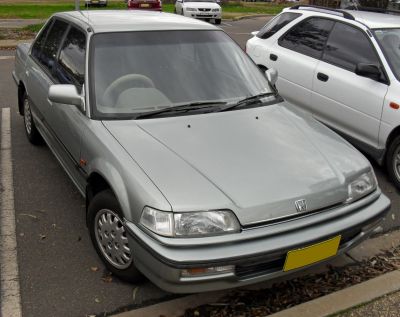
| Production: | 1987-1991 |
|---|---|
| Model Year: | 1987 |
| Length: | 4230 mm166.5 in |
| Width: | 1690 mm66.5 in |
| Height: | 1360-1390 mm53.5-54.7 in |
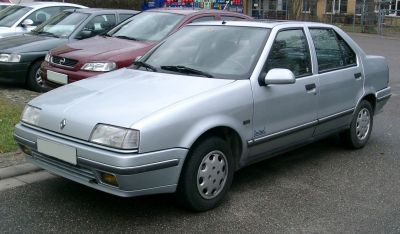
| Production: | 1989-1992 |
|---|---|
| Model Year: | 1989 |
| Length: | 4262 mm167.8 in |
| Width: | 1694 mm66.7 in |
| Height: | 1412 mm55.6 in |
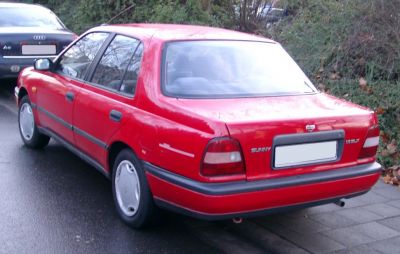
| Production: | 1990-1995 |
|---|---|
| Model Year: | 1991 |
| Length: | 4230 mm166.5 in |
| Width: | 1690 mm66.5 in |
| Height: | 1395 mm54.9 in |
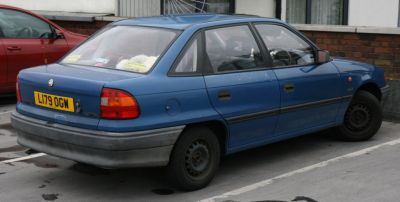
| Production: | 1991-1998 |
|---|---|
| Model Year: | 1991 |
| Length: | 4239 mm166.9 in |
| Width: | 1689 mm66.5 in |
| Height: | 1389-1410 mm54.7-55.5 in |
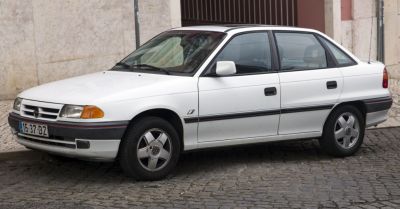
| Production: | 1991-1994 |
|---|---|
| Model Year: | 1992 |
| Length: | 4239 mm166.9 in |
| Width: | 1795 mm70.7 in |
| Height: | 1410 mm55.5 in |

| Production: | 1992-1996 |
|---|---|
| Model Year: | 1992 |
| Length: | 4248 mm167.2 in |
| Width: | 1696 mm66.8 in |
| Height: | 1417 mm55.8 in |

| Production: | 1992-1995 |
|---|---|
| Model Year: | 1993 |
| Length: | 4229 mm166.5 in |
| Width: | 1690 mm66.5 in |
| Height: | 1397 mm55.0 in |

| Production: | 1992-1997 |
|---|---|
| Model Year: | 1993 |
| Length: | 4270 mm168.1 in |
| Width: | 1685 mm66.3 in |
| Height: | 1380 mm54.3 in |
